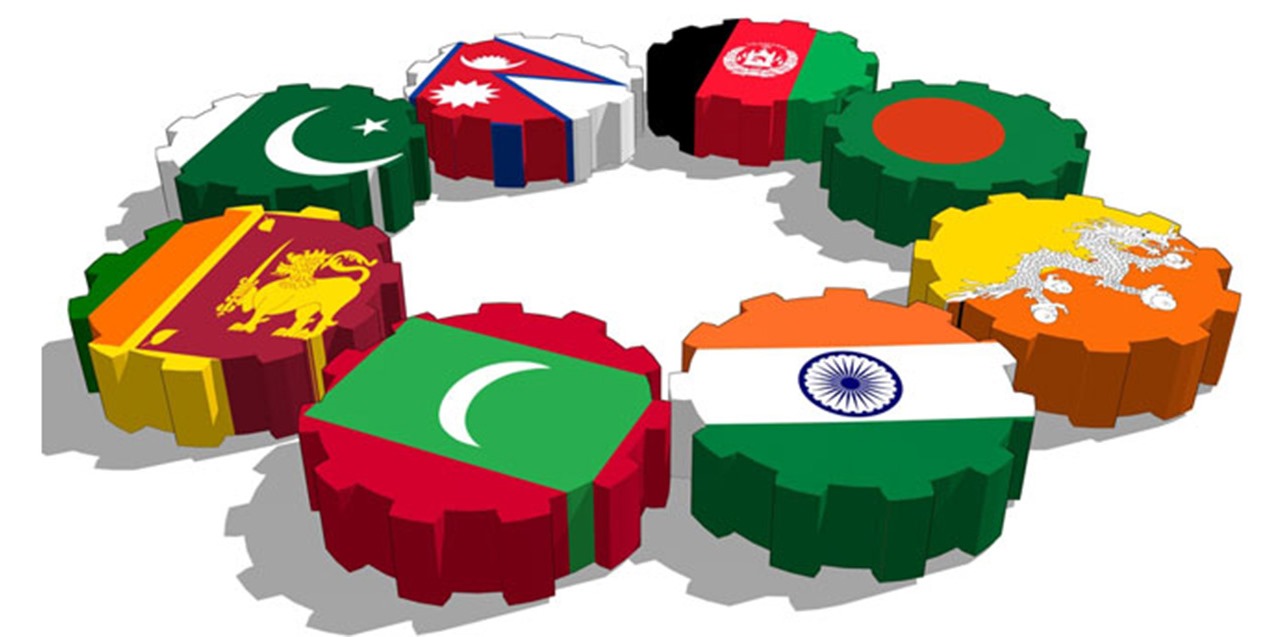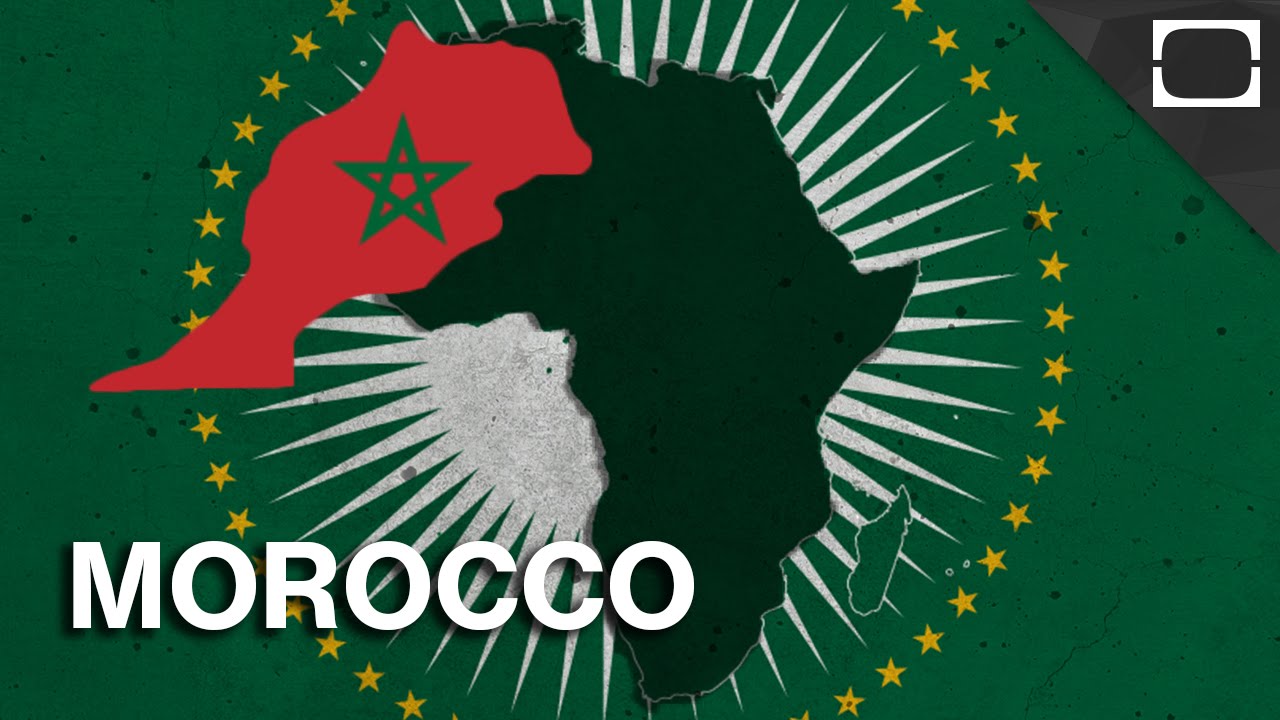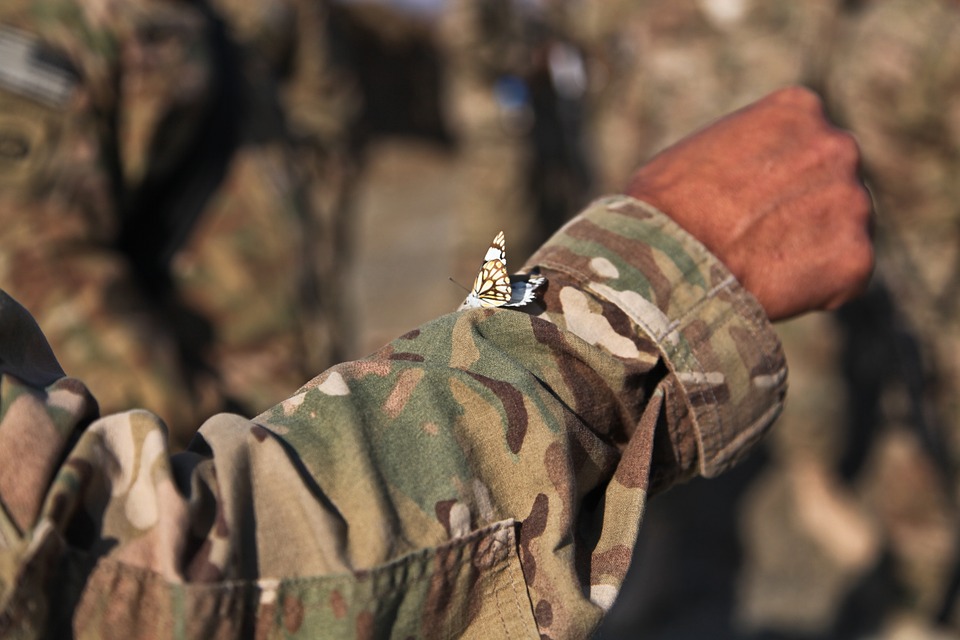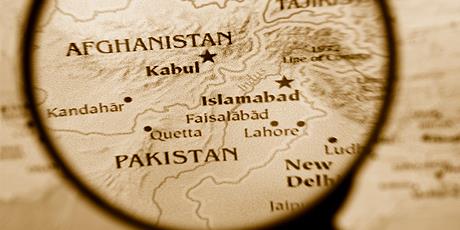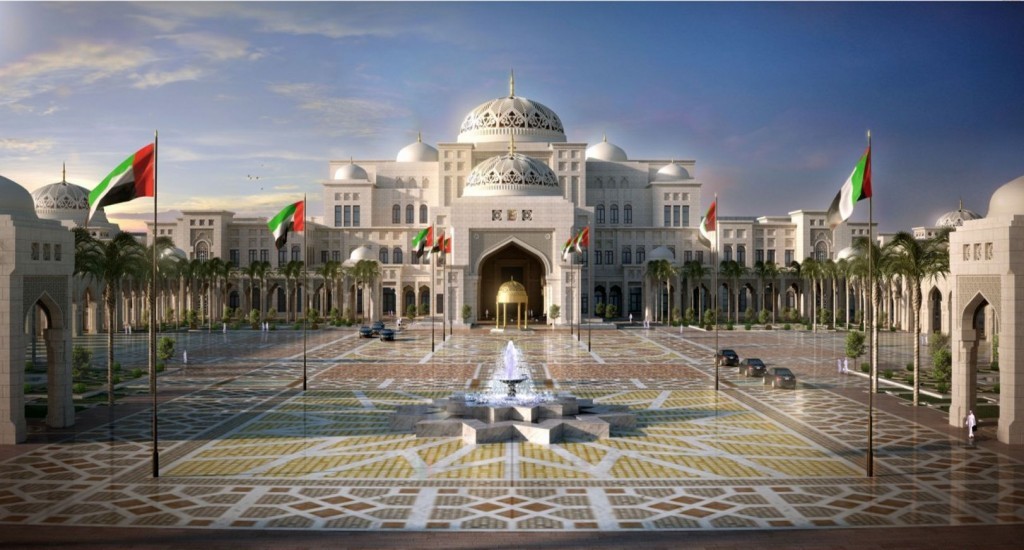Morocco and the African Union: Brothers without Strategic Partnership
In counterproductive step during a recent African Union summit in Rwanda, the Moroccan king Mohammed VI has declared that his country wants to return to the African Union; after a 32-year of absence from the OAU, in a lengthy letter to the 27th Summit of the African Union, held in Kigali, in July 2016.
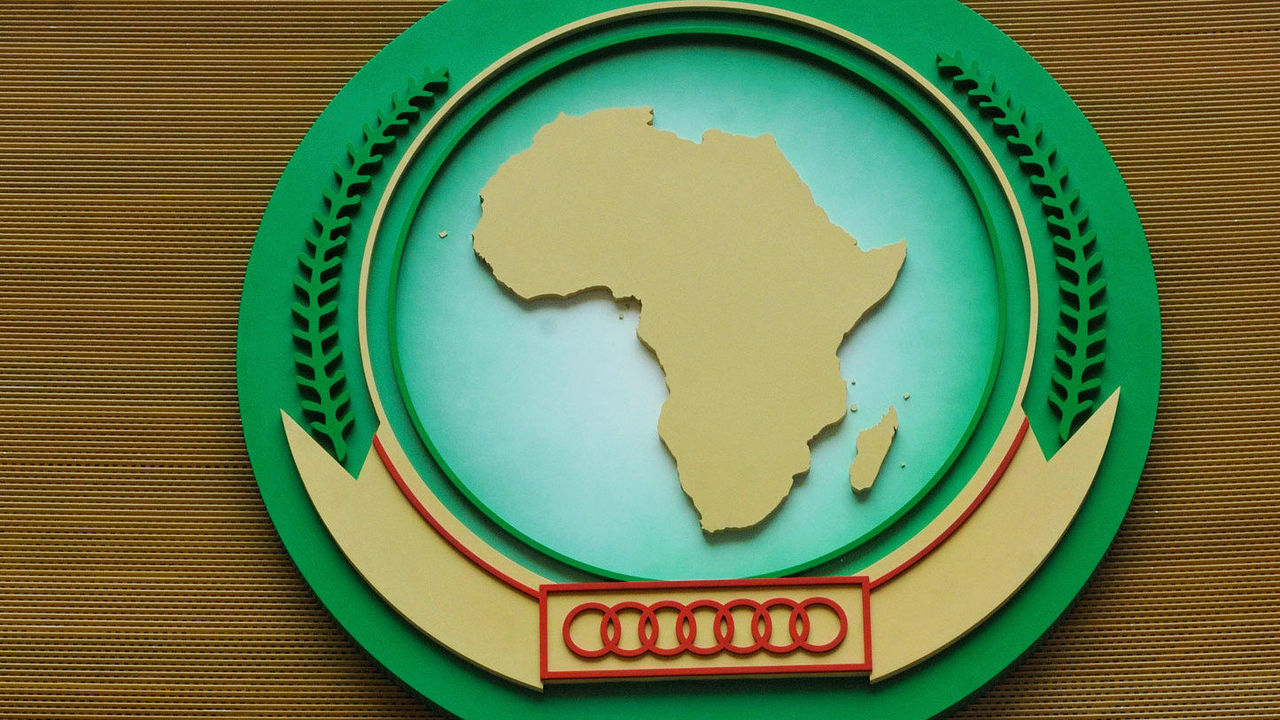
New dawn in strategic partnership
King Mohammed VI said that it was time for Morocco to retake its place. “For a long time our friends have been asking us to return to them so that Morocco can take up its natural place within its institutional family.” He stressed in a speech to African leaders as they began a two-day meeting. “Morocco’s return to the AU has a strategic objective, both politically and diplomatically, as its relations with the European Union and with the United States have taken a different turn.” Hicham Ras, researcher at the Moroccan House of Words Institute.
The King said that Morocco which withdrew from the OAU, has never quit Africa. It simply left an institution in 1984, in very special circumstances, stressing the fact that Morocco’s passionate relationship with the continent explains why the recognition of the SADR was understandably too hard for the Moroccan people to accept. Morocco has refused to join the AU unless the AU freezes or withdraws the SADR membership. In exclusive interview with a high ranking Moroccan diplomat in Chad, told Africa News Agency that Morocco is a founding member of the African Union, however, Morocco was forced to leave the organization in 1984, “Morocco cannot give Africa conditions to return home, yet, Morocco will never accept a pseudo state within the African Union”, he stressed.
Reunite Africa and transcend imbalances and divisions
Morocco’s return to the AU has left many observers wonder why Morocco really wants to return to the AU at this particular time – such a decision raises many questions about the implications of Morocco’s return towards the Western Sahara membership within the Union.
“We have realized that there are lots of divisions within the AU. Therefore, Morocco wants to work within the AU in order to reunite Africa and transcend imbalances and divisions.” A high ranking Moroccan diplomat in N’Djamena said.
Some observers are likely to believe that such procedures associated with Morocco’s decision to return to the AU were not newly born; Morocco took years preparing for such return, with the participation of some important countries in the continent, such as Senegal, Ivory Coast and Gabon.
Africa is the new strategic depth for Morocco
It seems obvious from the intensive visits of King Mohammed VI to a number of sub-Saharan countries that Morocco is trying to build new African strategic partnerships, through its heavily investment in mining, agriculture, banking, telecommunications, insurance, transport, energy, etc. “Morocco has a long presence in Africa, our strategic depth in Africa, built on historical and religious relations, we are now promoting an important economic revolution in Africa, Africa shall be a prosperous continent.” a high ranking Moroccan diplomat in N’Djamena said in this interview.
There is sound economic logic to the way Morocco is seeking to take advantage of its economic and cultural weight in the continent, in order to support its autonomy proposal for the SADR, which will be available only if Rabat puts an end to the empty seat policy that did not seem to work for decades. “We shouldn’t talk of a return, but rather of an adhesion. Morocco has very close relations with many African countries out of headquarters of the AU. Such as Senegal, Ivory Coast, Mali and mainly Gabon have had very successful diplomatic and strategic relations with Morocco at different levels. And I think that Morocco has rather a strategic wish to take part in the global issues that will shape the Africa of tomorrow, namely the migration issue, the fight against terrorism and climate change.”
Understanding differences and finding common ground
Perhaps the time has come for Morocco to play its last African game, using its African identity for south-south economic cooperation. “Africa is a huge continent with its vital forces, its resources and potentialities. It must take charge of itself, it is no longer a continent colonized, and this is why Africa should trust Africa.” King Mohammed VI told a business conference in Cote D’Ivoire in February 2016.
“This is what all the African states look for. Morocco is mostly aware of the continent-wide challenges facing its stability and threatening its development. It is a kind of obligation to look for common ground. The problems taking place in the Sahel, or the fluxes of migration and even climate change related issues are all concrete examples of intra-continental problems to be tackled with a common ground approach.” Ras said.
Morocco’s return to the AU would need to be validated by a vote of two-third majority. The nearest exit scenario will probably be the re-activation of Morocco membership as an AU member state.
The Western Sahara case
The Western Sahara case is also the main point of contention between Morocco and Algeria, which supports the Polisario Front. According to the Moroccan diplomat in N’Djamena; Algeria can play a vital role in the search for peace and solve the problem “Algeria can solve the contention just within 24 hours. Our people share common values, deep links among our citizens, and deeply rooted ties with tribes and families between the Moroccan-Algerian borders. But unfortunately the ruling class in Algeria does not want to.”
“Africa of 1984 was different. It was more ideological and undemocratic. Today, there is a new generation which is more pragmatic, which got rid of its ideological considerations.” Ras said.
Surely that Morocco’s return to the AU should project an excellent image of the continent. However, the stunning question that we still waiting for its answer from the next AU summit is that; is it the right time for the AU member states to stop burying their heads in the sand of the Western Sahara and promote integration policies instead? Or could Morocco’s return dangerously split the fragile union?
(Part II) Afghanistan a war-torn country yearns for peace. Life in Afghanistan has been paralyzed. Its economy is in tatters. Almost ninety percent of its GDP comes from foreign funding. Unemployment ratio is skyrocketing. Fifty percent of its population is unemployed. In the country, suicide bombing, bloodshed, and massacre of innocent people are norms of day. The Taliban and al Qaeda have ruined the country. Now Islamic state of Iraq and the Levant (ISIL) a militant group has been trying to hold it influence in Afghanistan. Unfortunately, the physical feature and the geostrategic position of Afghanistan absolutely suit to ISILs nefarious agendas and aims. In this sorry state of affairs of Afghanistan, it earnestly needs peace. It is high time for peace in Afghanistan.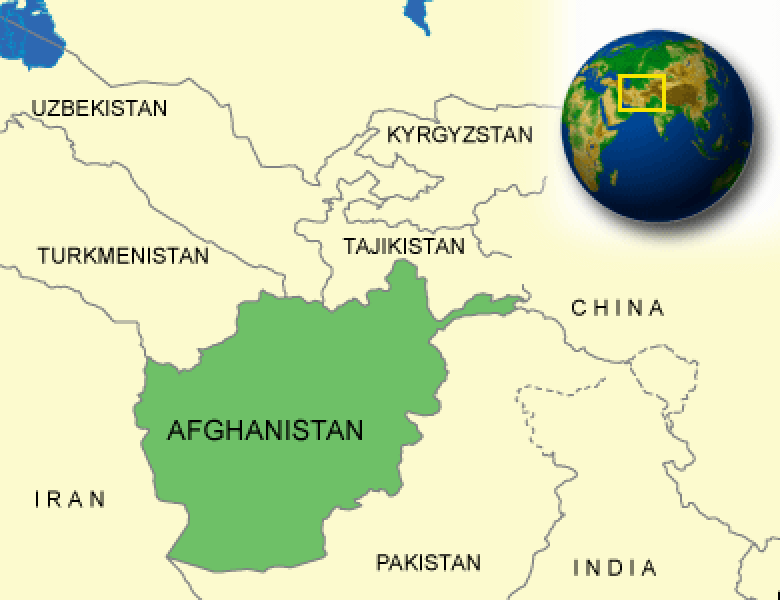
Prospects for peace in Afghanistan:
Though clouds for peace in Afghanistan are bleak yet there are some silver lines for peace process in Afghanistan. Earlier a few stakeholders wanted peace for Afghanistan. But now ground realities have drastically changed. Presently a number of parties want peaceful and stable Afghanistan. The stakeholders are China, Russia, the US, Iran, India, Pakistan, and astonishingly even the Taliban.
China earlier stayed aloof from the conflict of Afghanistan. Now it yens for peace in Afghanistan .Uighur militancy is a formidable threat to the security of China. Uyghur gets assistance from Afghan Taliban. Growing militancy of Uyghurs in its Xingjang province has compelled China to look for peaceful Afghanistan. Additionally, china has political and economic interests in Afghanistan. China looks for stable Afghanistan as a gateway to Central Asia for its ambitious one belt one road initiative. China has invested a significant amount of resources in Afghanistan to exploit its the mineral wealth.
Increasing stronghold of the militant group ISIL in Afghanistan poses an alarming threat to the security and sovereignty of Russia. Its fearful about wicked aims of monster ISIL in Afghanistan. It’s the main reason which has forced Russia to be closer to the Taliban, a former arch enemy of Russia. Its rightly said that there is no permanent friend or foe in international relations. However, some geopolitical analysts claim that Russia would use the Taliban as pressure group against America for its vested interests.
The US a major stakeholder for peaceful and stable Afghanistan has been thinking to resend more troops to Afghanistan. The US has miserably detained itself in Afghan conflict like in Vietnam War. Now it also earnestly wants peaceful and stable Afghanistan. America could not bear more cost of Afghan war.
The Taliban who fights with Kabul as well as foreign forces yearns for peace in Afghanistan on their own conditions. The Taliban and other militant groups have been fighting with each other. The ISIL is deemed a big threat to existence of Taliban in Afghanistan. The ISIL has been struggling to hold its influence in Afghanistan. But the Taliban has been trying its best to eliminate ISIL from the soil of Afghanistan. It is very difficult for the Taliban at a one time to fight with the US forces, the Kabul government and the militant ISIL group. Therefore, the Taliban gravely crave for peace in Afghanistan. It is the cause the Haze bi Islami, Afghan militant group, headed by Gulbideen Hakmatyar surrendered to Kabul government in September in 2016.
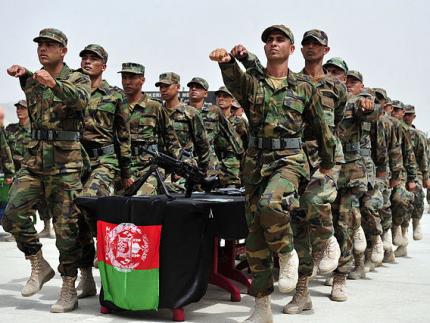
Pakistan another stakeholder for peaceful and stable Afghanistan covets for peace in Afghanistan. Peaceful Afghanistan is more beneficial for Pakistan than any other country. Pakistan shares porous border with Afghanistan. Pakistan is unable to crush TTP a militant group which has waged war against the state of Pakistan. After attacking Islamabad they usually flee to Afghanistan. If peace comes in Afghanistan, Pakistan would also be peaceful. Growing militancy and terrorism in Pakistan is due to instability in Afghanistan. Therefore, Pakistan is also trying its best for peace settlement in Afghanistan.
The people of Afghanistan also abjectly need peace. Thirty five years long war in Afghanistan has tired the people of Afghanistan. Unfortunately now even birds of the country do not fright from shoots of guns. The people demand peace.
Peace in Afghanistan is not only helpful for development and stability of the region but for the whole world. International community has applied all means for the resolution of the Afghanistan conflict including, force, negotiations and some times dual policy of force and talks, deplorably none has succeeded in its goal i.e. peace in Afghanistan. In my opinion, peace in Afghanistan is only possible when neighboring and near neighboring countries of Afghanistan compromise on their interest for common good i.e. peace and security of the region. Fortunately, some neighbors such as Pakistan, china, Russia and Iran have shown some degree of compromise for their interests. Hence, peace in Afghanistan is at hands.
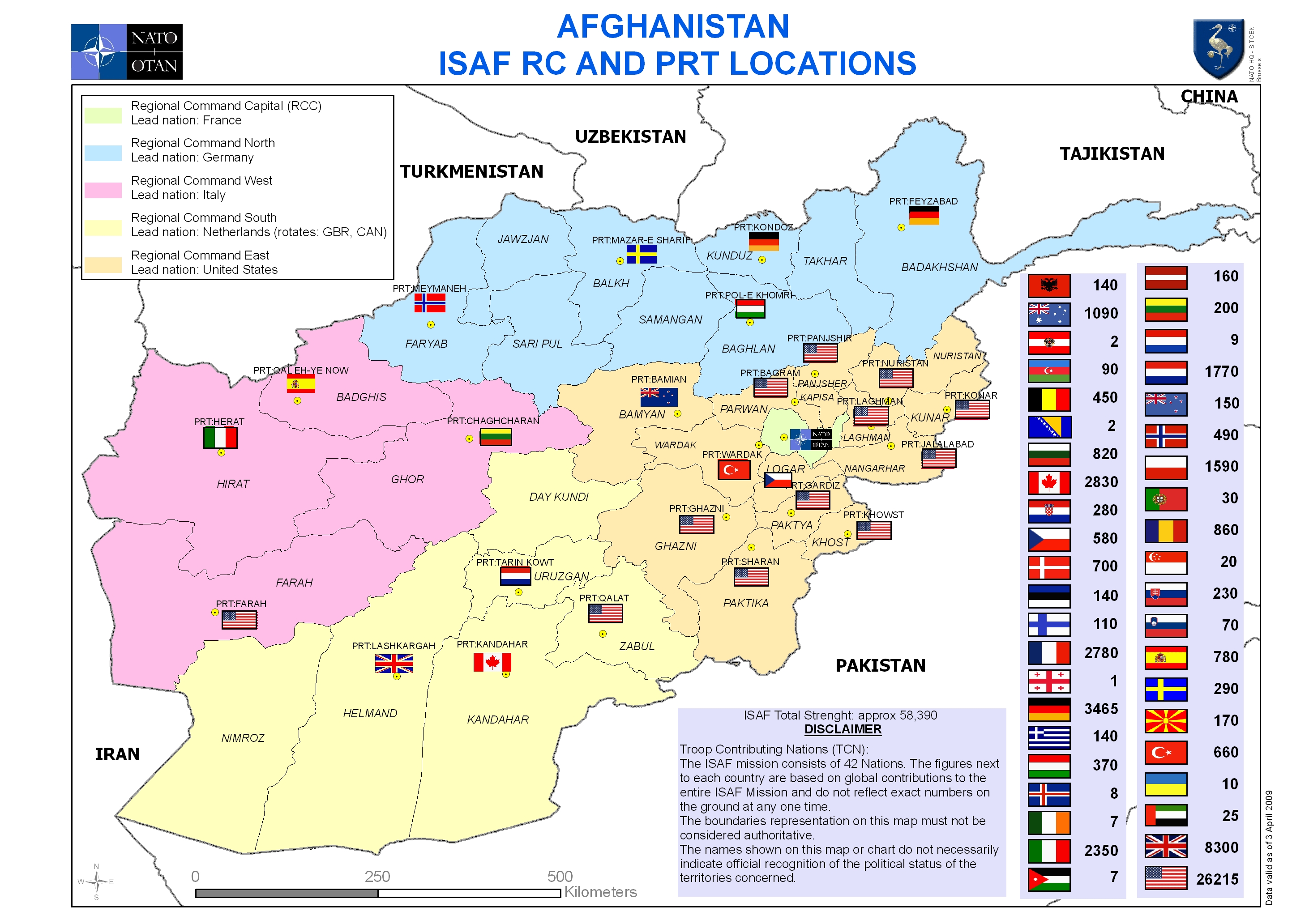
By Sattar Kingrani
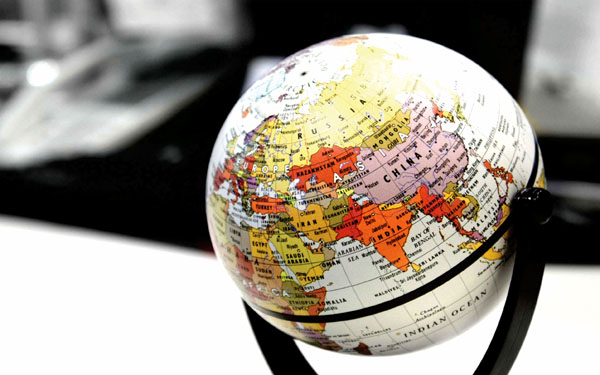
In the recent months, fears have been expressed that Pakistan is, or will soon be, isolated due to a flawed foreign policy being pursued by the government. But, a brief analysis of the state of affairs reveals that those expressing these fears are largely mistaken as many of them seem to be using Indian rhetoric. As a matter of fact, Pakistan is far from being isolated as we have many reliable friends like China, Turkey, and the OIC member states. However, for stopping these fears from becoming a reality, we need to adapt our foreign policy goals and institutions to the changing regional and global realities.
The incumbent government of PML-N is in fourth year of its current tenure, but Pakistan’s foreign office still awaits a full-time foreign minister. In the present scheme of things, it seems that there are four centres of power to conduct country’s foreign policy and international relations. A quadruplet, consisting of Prime Minister Nawaz Sharif, his Adviser on Foreign Affairs Sartaj Aziz, his Special Assistant Syed Tariq Fatemi, and his brother and the Chief Minister of the Punjab province Shahbaz Sharif, is controlling the foreign policy. But there are many flaws in this setting which need to be removed at the earliest. First of all, PM’s Adviser Sartaj Aziz, an octogenarian and an economist by profession, seems reluctant to identify the real factors behind foreign policy fiascos and, as per his understanding, ‘everything is going well’. Differences between him and Tariq Fatemi, a career diplomat for over 35 years, are no more a secret. Being Prime Minister is a full-time job and it leaves little time behind Nawaz Sharif to focus exclusively on foreign affairs. The CM Punjab Shahbaz Sharif mostly deals with China and Turkey. But, we need to fill the vacuum of a dedicated foreign minister for whose assistance Tariq Fatemi is a better option as he understands the intricacies and requirements of foreign relations very well.
Pakistan’s foreign office needs to understand the policies of other countries separately so as to know what they can offer us and what they want from us. More than 69 years have been passed since Pakistan’s independence, but it is not clear yet whether America is our friend or a foe. In fact, even Americans see Pakistan neither as a friend nor foe, as this bilateral relationship has been purely a need-based one.
After nearly seven years of efforts, the United States signed a mutual defence assistance agreement with Pakistan in 1954 and Pakistan joined the South East Asian Treaty Organization (SEATO) in 1954 and signed the Baghdad Pact in 1955 (later the Central Treaty Organization — CENTO). But by doing so, Pakistan became only a tool to be used against Communist countries. Pakistanis, on their part, thought that friendship between Pakistan and the US was cementing, but actually they forgot that they were being used by the US. Later, General Ayub Khan allowed the US to use an airbase in Pakistan for spying against the then-USSR — the U2 incident—and Pakistan, in return, was awarded grants, aid and loans.
However, during the India-Pakistan wars of 1965 and 1971, the reality dawned on Pakistanis as the US denied any military assistance to Pakistan in utter disregard to her alliance with the country. Resultantly, Pakistan withdrew from SEATO in 1973 and CENTO in 1979.
During Zia-ul-Haq’s era, when Soviet Union attacked Afghanistan, the United States again came closer to Pakistan and this time its aim was to counter growing Soviet influence. Zia’s aligning with India proved detrimental as his Machiavellian embrace with the US led Pakistan to a position where Kalashnikov culture, sectarian violence and the drug use and trafficking increased. America provided huge chunks of financial assistance to Pakistan to be spent on Afghan Jihadis. During that time America also finalized the deal of F-16 combat jets with Pakistan, for which Pakistan made the full payment.
After Soviet withdrawal from Afghanistan, when Americans felt that they did not need the country anymore, they tried to strangulate Pakistan with the Pressler Amendment whereby the US president George Bush (Senior) imposed sanctions on the country in October 1990 and the supply of F-16 aircrafts was halted, and the US even refused to return the money Pakistan had already paid for them.
Another U-turn in American policy came in the aftermath of the fateful incident of 9/11 when the US administration decided to launch a global war on terror. Feeling that Pakistan’s help was pivotal in this regard, the US again came closer to Pakistan. The move was reciprocated positively. At that time, with skilful diplomacy, we should have gained F-16s from the US, but our foreign office remained lethargic on that issue. It seems incredible that Pakistan, despite suffering huge losses in this war, failed to achieve the status of respect and America is still chanting the ‘do more’ mantra.
Instead of providing military assistance to Pakistan, America preferred India, and is still doing so. In Asia, India is poised to perform the role of America’s policeman against China and Pakistan. It exploits perceived threats from China to justify its significant buildup of nuclear and conventional arms and to remain close to the US. But, in essence, these weapons pose a bigger threat to Pakistan. It’s very clear that only India and Afghanistan are behind suicide blasts and other forms of terrorism in Pakistan.
Despite knowing the true nature of India and that of its anti-Pakistan designs, the government of Pakistan seems reluctant to ameliorate its foreign policy and hesitates to raise the issue of Indian terrorism in Pakistan. In the modern world only an astute leader, who has the superlative ability to think and move ahead, can lead the nation in a right direction. Before the 71st UN General Assembly session, which kicked off in September 2016, India was hell-bent on portraying Pakistan as a terrorist state in the world. But, during his speech before the UNGA, Nawaz Sharif looked as a Prime Minister of only Jammu and Kashmir, not of the whole Pakistan. It’s good that he raised the Kashmir issue, but he should have also told the world about Indian efforts aimed at spreading terrorism in Pakistan presenting the arrest of Kulbhushan Yadav as an undeniable proof.
Afghanistan was the only country that opposed Pakistan’s membership in the UNO. Recently when Pakistan; decided to construct fence and gates along the Afghanistan border, it started talking against Durand Line. The Foreign Office should clearly tell them and the world at large that it is an internationally recognized border which was created after Emir Abdur Rehman wrote a letter to Viceroy Lord Dufferin in 1988, requesting to settle Indo-Afghan border, so after hectic negotiations, DLA was signed in Rawalpindi in 1893. The agreement was later ratified by Emir Habibullah in 1905. Afghan officials also should be reminded that in Afghanistan-Pakistan Transit Trade Agreement 2010, which is accepted and signed by both countries, Durand Line was defined as an international border.
China’s relations with Pakistan are crystal clear, especially after the announcement of $46 billion project of CPEC and the assistance of JF-17 thunder combat planes.
In a nutshell, Pakistan is not isolated, nor it is going be, but there are some problems in our foreign policy which need to be solved at the earliest because in the modern world, only a robust foreign policy guarantees a better economy and a strengthened nation.
Kashmir issue has been the cornerstone of Pakistan’s foreign policy since 1947. The region is the source of rivers flowing into Pakistan and Pakistanis have strong apprehensions that if Kashmir remains under Indian occupation, their country will be strangulated as there will be no availability of sufficient water to support Pakistan’s agricultural sector, the backbone of country’s economy. Since the Kashmir is a disputed territory under the United Nations Security Council resolutions, Pakistan believes that it will remain so until and unless the UN resolutions are implemented.
Kashmir has been a festering sore and primary cause of friction and conflict between India and Pakistan since partition. Accordingly, it has been a priority on the foreign policy agenda of each government but has defied resolution and even led to wars between the two states.
Historically, Pakistan has viewed its dispute with India over Kashmir as the key determinant of its strategic behaviour in the international arena. Advocacy of the rights of the Kashmiri people to freely determine their future has been the main plank of Islamabad’s diplomatic strategy in the United Nations and other international forums. By championing the cause of the rights of the Kashmiri people, Islamabad has tried to remind the world that India’s control over two-third of the State is not only legally untenable but is also morally unjust as it was achieved by means of “fraud and violence” and through an instrument of accession signed by a ruler who had lost the support of the vast majority of his predominantly Muslim subjects. Pakistan’s official stance on Kashmir can be summarized into the following six interrelated propositions.
- The State of Jammu and Kashmir is a disputed territory.
- This disputed status is acknowledged in the UN Security Council resolutions of August 13, 1948 and January 5, 1949, to which both Pakistan and India are parties.
- These resolutions remain operative and cannot be unilaterally disregarded by either party.
- Talks between India and Pakistan over the future status of Jammu and Kashmir should aim to secure the right of self-determination for the Kashmiri people. This right entails a free, fair and internationally supervised plebiscite as agreed in the UNSC resolutions.
- The plebiscite should offer the people of Jammu and Kashmir the choice of permanent accession to either Pakistan or India.
- Talks between India and Pakistan, in regard to the future status of Jammu and Kashmir, should be held in conformity both with the Simla Agreement of July 1972 and the relevant UN Security Council resolutions. An international mediatory role in such talks maybe appropriate if mutually agreed.
However, it is important to note that during recent months a lot of surge has been witnessed in highlighting the Kashmir issue at international forums. After NSA-level Pakistan-India talks were cancelled due to Indian haughtiness and blatancy, Pakistan started to draw world’s attention towards the issue. Pakistan believes that the Kashmir issue should be resolved through the United Nations’ resolutions and international community should play its role in this regard.
The Gulf is important for a whole host of reasons, and most people understand that. The religious Holy Land link is but one facet of the relationship. We were the natural first port of call — back in the day when we were bigger, better and stronger — for Arab countries looking to expand after the petro bonanza. We helped build their armies, airlines and newspapers, among other things.
We also supported the Arab brethren in the Palestinian conflict. In return, they provided precious cheap oil; which proved pivotal in our times of isolation, like the sanctions environment that followed the decision to go nuclear. And they always sided with us politically, even if the Kashmir question often enough escaped their attention.
But of late Arab demands have tended to transgress too deep into our internal and foreign policies. The Yemen situation, for example, where the GCC was openly upset by our parliament’s unanimous decision. Since the Arab Spring has been increasingly perverted, and a GCC-Iran proxy war of sorts has started playing out in the Wider Middle East, Pakistan is being pushed in an increasingly difficult position. Parliament was cautious over Yemen because there was risk of deepening sectarian cleavages at home, not to mention engaging and compromising our military in a conflict we have nothing to do with; that too at a time of an existential internal war.
Relations have admittedly worsened since then, and it is natural for Islamabad to try and improve the climate. But for the government to push the Supreme Court to reconsider the ban on houbara bustard hunting – because it is allegedly spoiling relations with the Gulf – is as surprising as it is naïve. For one thing, it is unbecoming of a government to argue against a ban on hunting an endangered specie, especially if it is meant for sport and fun for foreign princes.
For another, linking such things with deep-rooted foreign policy decisions betrays a startling poverty of imagination and understanding in the present foreign office and ministry. Perhaps this is the result of not having a dedicated foreign minister. Or perhaps this just shows to what depths our politicians and bureaucrats have descended. Either way, there is a need to breathe fresh air, and life, into the foreign ministry. Our friends, just like our governments, must respect the decisions of our courts and toggle foreign relations accordingly.
This article was written and published on : http://jworldtimes.com/jwt2015/pakistan-affairs/the-gulf-factor-in-pakistans-foreign-policy/

This article intend to give a brief overview of who are India’s main allies in the world today.There is very thin line between allies and friends and India knows it very well. India has the particularity to be a neutral country, meaning that they are neutral toward all the nations in the world. India’s main opponents in the International Arena are China (Mostly Economic Rivalry) and Pakistan (Military Territorial conflict over Kashmir). Recently these two countries have become closer to Russia. Therefore the coming years would be of strategic importance for India.
India is neutral to almost all the nations except some of neighbours.
The allies which can be trusted in any situation are:
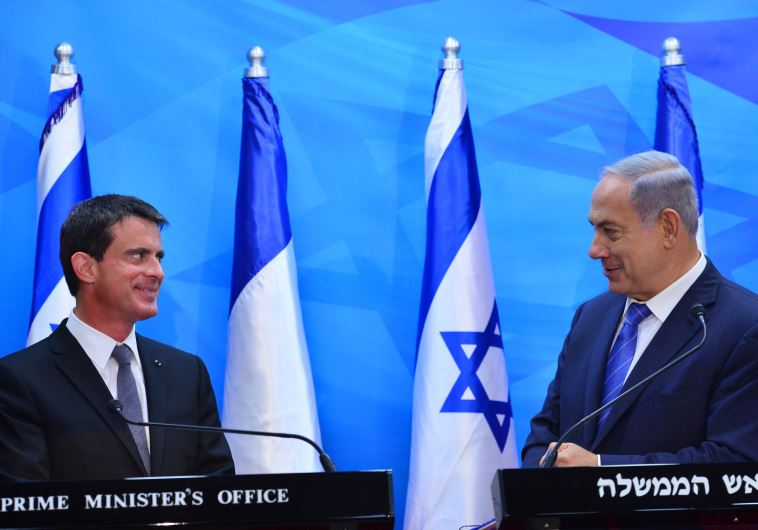
1.Israel : Recent surveys and polls in the Jewish state have shown that India is most favoured nation in Israel and most of Israelis support India over other nations. India is not only popular at the governmental level, but also among the Israeli population. Israelis seeing India as a natural ally in the fight against Islamic Terrorism.
2.United States:Well,you can’t predict when US would make a U-turn.Supporting Pakistan in back to back wars and selling weapons to them is good example.Recent activites suggests that United States is genuinely interested in India. The Obama Administration tried to get closer to India but was unable to do so because of a weak leader in India. At the end of Obama’s term , Modi’s election permitted to boost ties between the two countries. Trump . the new American President is seen as a good friend of India
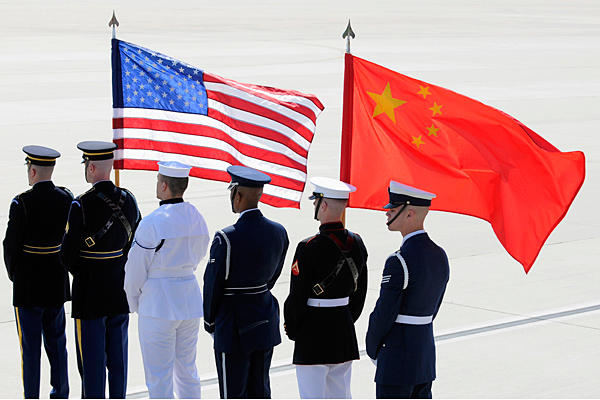
3.Japan :India and Japan have much in common.Both are ancient civilizations with determination to move to the top. Japan has always supported India since its independence. Japan is a strong global economic power. that would definitely be interested by supporting India in order to counter China’s rampant aggressions in the South China Sea.
Will World War III begin in the South China Sea?
4.Iran :Iran is kind of new ally to India as Iranian government is supporting India on various issues and India is returning back the favour by supporting Iran in nuclear program. India main reason to support Iran is oil. Indeed despite a different philosophy Realpolitik remain important for Indians decisions-makers
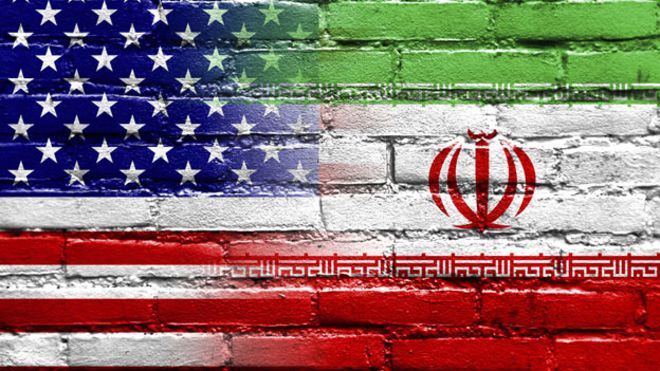
5.Nepal : Despite financial assistance from China, Nepal share a culture that is traditionally closer to Indian different cultures rather than the Chinese one. Nepal has border agreements with Indias and they have by the past heped Indian authorities to track terrorists elements ( who come to India via Nepalese territory).
Bhutan, Phillipines, Vietnam and South Korea would also be interested to support India in order to curb Chinese growing threat in the South China Sea.
Due to political crisis, Michel Temer announced that won’t participate of G20 meeting, provided to be on 7th and 8th of July in Hamburg, Germany.
By Fabrício Barbosa
Brazil has getting international attention on recent months due to its political crisis since Dilma Rousseff’s Impeachment. Unconcluded the political debates if the process was or not a coup, the fact is that Michel Temer achieved the Presidence, but the Car Wash Operation, the same that was used to incriminate Workers Party e others policymakers, kept going with his jobs and now it knocks on President’s door.
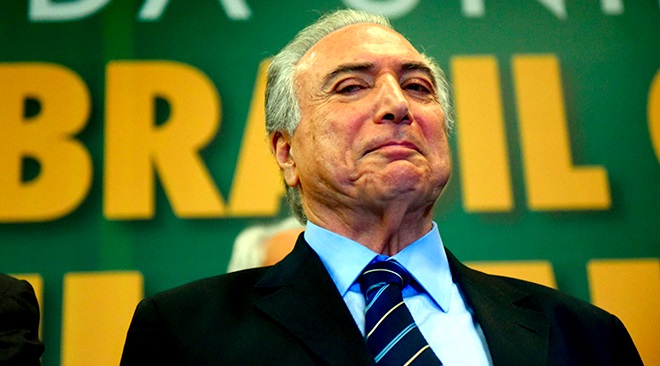
Audio Tape, Corruption and Empeachment
Recently, an audio between the President and Joesley Batista, an influent CEO in Brazil, was publicized, and since then many vicissitudes appeared on Michel Temer’s government. In this audio, the President says to the CEO to keep paying bribe to Eduardo Cunha – the ex-Lower House President that started Dilma Roussef’s Impeachment and that’s arrested now – to keep his silence under Car Wash Operation. The impact of this divulgation was imediate: some Government Ministers resigned of their charges and some public manifestations urged in whole country, some of them, in Brasília, were even violent. The President act is classified as a responsability crime, that can results in impeachment as brazilian Constitution says on its 85º article.
Negative impact on Brazilian Economy
Despite it, Rodrigo Maia, the actual Lower House President, who can starts the impeachment process, supports Michel Temer, and he already said that he won’t open the process now.
The fact is that brazilian people is facing a very complicated situation, that both solutions generates more confusion for other countries and investors, that are afraid to invest in Brazil, what keep blocking the economic growth: The first one is to urge to the impeachment, what could results in a undirect election among National Congress policymakers, that can even results in unsatisfaction by people, and the second one is to accept Michel Temer at presidence, what keeps the political instability.
Why the G20?
The G20 priorities are the regulamentation of international finances and the search for the economic growth, and the meeting of this year can be renovating due the fact of many governments around the World suffered changes since last year, and their mainstream acts too. The World is still recuperating of 2008 Crisis, and Brazil is country that is giving signs of it just now, so Michel Temer presence is important to Brazil.
Last year, Michel Temer went to G20 in China right after assume the presidence, and now, avoiding exposure and more critics about the political crisis, he announced on Wednesday, 28 of June, that he won’t go to the event. This can be a precipitaded decision, and he still can change his opinion about it until the event, but it’s almost sure that he won’t go.
The brazilian economy is returning to its development, but unemployment is still high, something closer to 14% of population, and the government is trying to make some reforms on Labor Law and Social Security, what puts the people in a situation of very unsatisfaction with Michel Temer.
Despite it, people seems to opte for the second option and to keep him on presidence, trying to avoid more instability on economics, that has having great results on last months, but the fact is that the brazilian people wish of a new election, that will happens only in October of 2018, is similar to the wish at the end of the Dictatorial Process in 1985, this election is seem as the only way give an end to political instability and to give peace on relationships between people and government, that never were so weak on Brazil’s recent history.

About the Author : Fabrício Barbosa is a brazilian International Relationships student and Technician in brazilian law that has a strong interest on his country’s economy and policy (internal and external). He studies for the exam to brazilian diplomatic service and is specializing in Mercosur.
A palace is a grand residence, especially a royal residence or the home of a head of state or some other high-ranking dignitary, also homes of kings and emperors. These splendid palaces are among the Most Famous Monuments in the World. These amazing monuments were once the homes of kings and emperors, now popular tourist attractions. Here is a list of top 10 most beautiful royal palaces in the world.
10. Pena National Palace
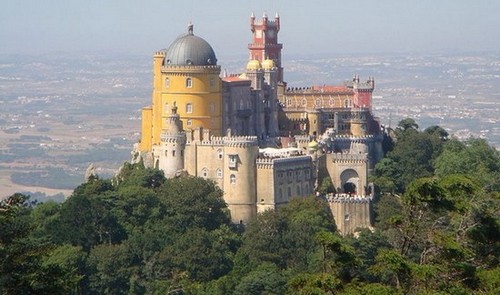
The Pena National Palace is a Romanticist palace in Portugal, Built in 1842 by King Ferdinand II. The palace was constructed on the ruins of a monastery severely damaged in the Great Lisbon Earthquake of 1755. Today, with it original colors of red and yellow restored, the Pena National Palace is one of Portugal’s most visited monuments.
9. Mysore Palace
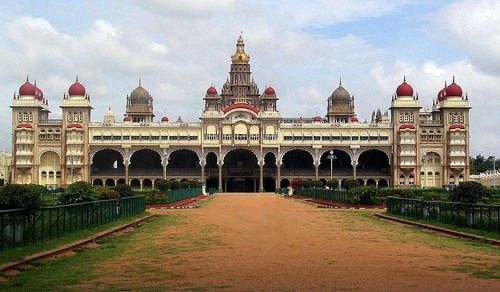
Also known as Amba Vilas Palace, is a palace situated in the city of Mysore in southern India. It is the official residence of the Wodeyars – the erstwhile royal family of Mysore, and also houses two durbar halls (ceremonial meeting hall of the royal court). Mysore is commonly described as the City of Palaces, Mysore in India has a number of historic palaces of which Mysore Palace is the most famous one. Mysore palace is now one of the most famous tourist attractions in India after Taj Mahal with more than 2.7 million visitors.
8. Schönbrunn Palace
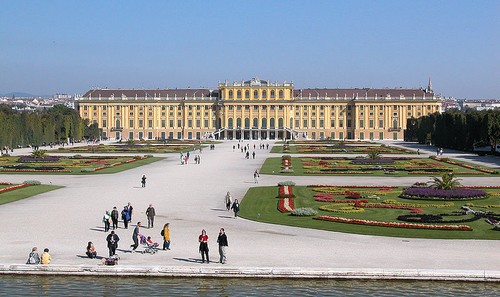
One of the most important cultural monuments in the country, since the 1960s it has been one of the major tourist attractions in Vienna. Schönbrunn Palace is a former imperial 1,441-room Rococo summer residence in modern Vienna, Austria. The palace was built between 1696 and 1712 at the request of Emperor Leopold I. The Palace Park offers a lot of attractions, such as the Privy Garden, the oldest zoo in the world, a maze and labyrinth, and the Gloriette (a marble summerhouse) situated on top of a 60 meter high hill.
7. Summer Palace
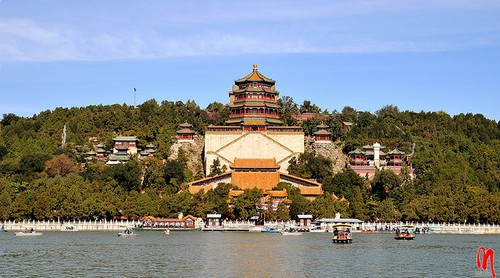
The Summer Palace is a palace in Beijing, China. The Summer Palace is mainly dominated by Longevity Hill and the Kunming Lake. It covers an expanse of 2.9 square kilometres, three quarters of which is water. This place was used as a summer residence by China’s imperial rulers – as a retreat from the ‘Forbidden City’. The gardens were substantially extended in 1750, reproducing the styles of various palaces and gardens from around China. Kunming Lake was extended to imitate the West Lake in HangZhou.
6. Palace of Versailles
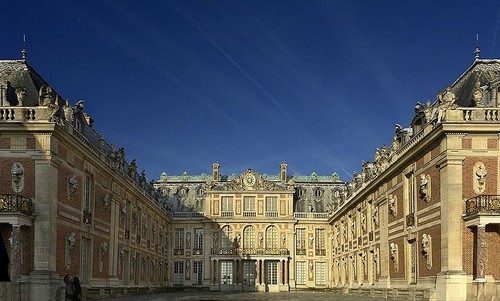
The Palace of Versailles is a royal château in Versailles in the Île-de-France region of France. Versailles was originally a hunting lodge, built in 1624 by Louis XIII. When the château was built, Versailles was a country village; today, however, it is a wealthy suburb of Paris, some 20 kilometres southwest of the French capital.
5. Château de Chambord
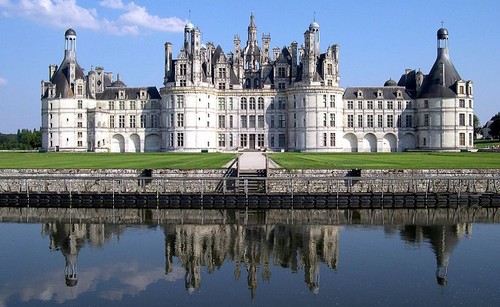
The royal Château de Chambord at Chambord, Loir-et-Cher, France, is one of the most recognizable châteaux in the world because of its very distinct French Renaissance architecture which blends traditional French medieval forms with classical Renaissance structures. The building was constructed by King François I.
4. Buckingham Palace
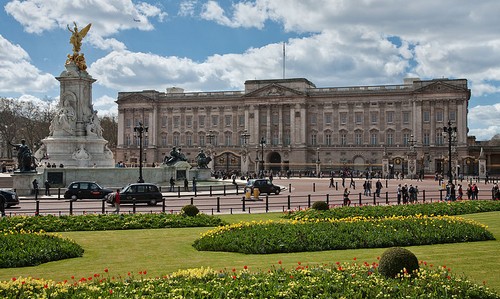
Originally known as Buckingham House is the official London residence and principal workplace of the British monarch. Located in the City of Westminster, the palace is a setting for state occasions and royal hospitality. It has been a focus for the British people at times of national rejoicing and crisis.
3. Alhambra
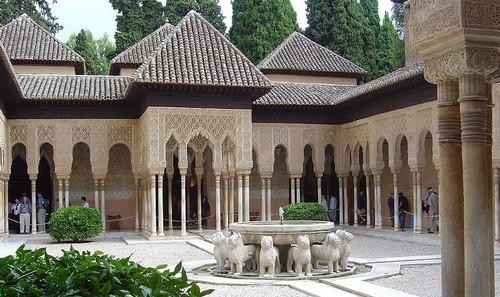
Alhambra is a palace and fortress complex located in Granada, Andalusia, Spain. It was originally constructed as a fortress in 889, and was converted into a royal palace in 1333 by Yusuf I, Sultan of Granada. The Alhambra’s Islamic palaces were built for the last Muslim Emirs in Spain and its court, of the Nasrid dynasty. After the reconquest by the Reyes Católicos in 1492, some portions were used by the Christian rulers. The Alhambra is now one of Spain’s major tourist attractions and many visitors come to Granada just to see the Alhambra.
2. Potala Palace
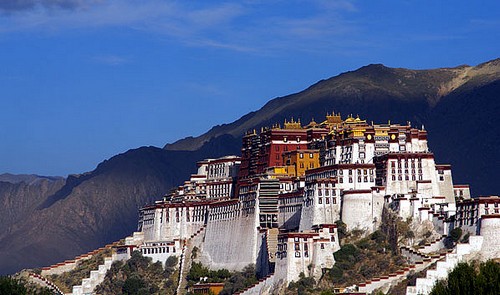
The Potala Palace is located in Lhasa, Tibet Autonomous Region, China. Situated on Marpo Ri hill, 130 meters above the Lhasa valley, the Potala Palace rises a further 170 meters and is the greatest monumental structure in all of Tibet. Although a palace was already built here in the 7th century the construction of the present palace began in 1645 during the reign of the fifth Dalai Lama and by 1648 the Potrang Karpo, or White Palace, was completed. The Potrang Marpo, or Red Palace, was added between 1690 and 1694. The Potala Palace remained the residence of the Dalai Lama until the 14th Dalai Lama fled to India, after the Chinese invasion in 1959.
1. Forbidden City
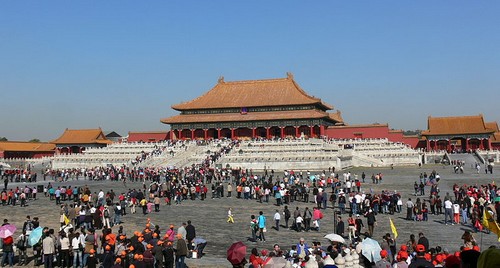
One of the most Beautiful Royal Palaces. Built in 1406 to 1420, The Forbidden City was the Chinese imperial palace from the Ming Dynasty to the end of the Qing Dynasty. It is located in the middle of Beijing, China, and now houses the Palace Museum. For almost 500 years, it served as the home of emperors and their households, as well as the ceremonial and political center of Chinese government. The complex consists of 980 buildings and covers 720,000 Squar meter.The palace complex exemplifies traditional Chinese palatial architecture and has influenced cultural and architectural developments in East Asia and elsewhere.
Original Article : http://www.wonderslist.com/top-10-most-beautiful-royal-palaces-in-world/
Part 2 : Afghanistan a war-torn country yearns for peace. Life in Afghanistan has been paralyzed. Its economy is in tatters. Almost ninety percent of its GDP comes from foreign funding. Unemployment ratio is skyrocketing. Fifty percent of its population is unemployed. In the country, suicide bombing, bloodshed, and massacre of innocent people are norms of day. The Taliban and al Qaeda have ruined the country. Now Islamic state of Iraq and the Levant (ISIL) a militant group has been trying to hold it influence in Afghanistan. Unfortunately, the physical feature and the geostrategic position of Afghanistan absolutely suit to ISILs nefarious agendas and aims. In this sorry state of affairs of Afghanistan, it earnestly needs peace. It is high time for peace in Afghanistan.
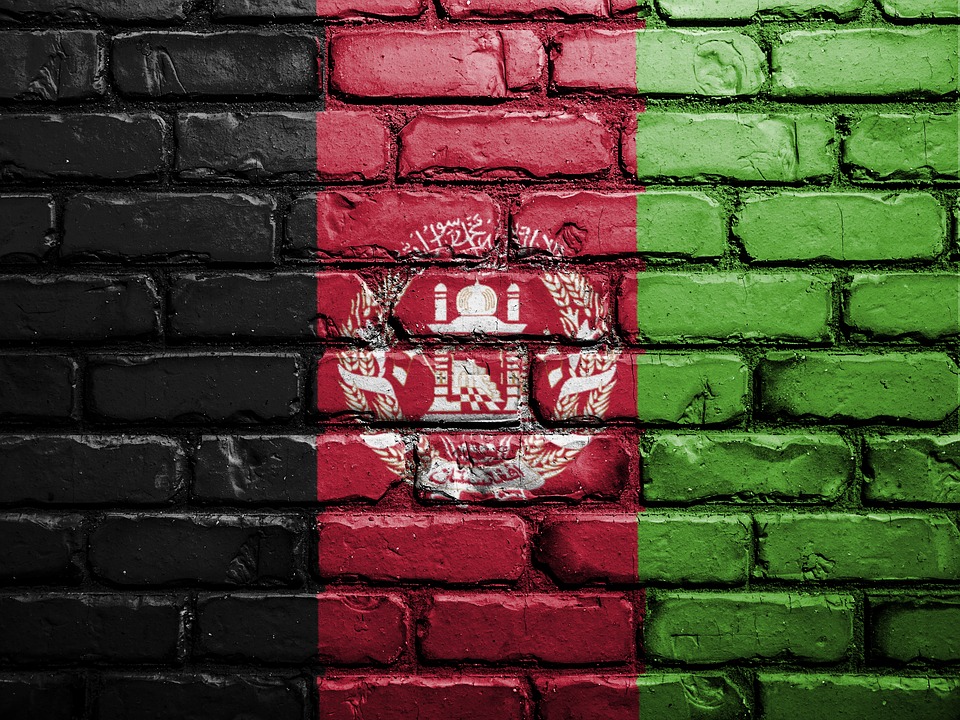
Hurdles for the peace process of Afghanistan:
First, the Afghan Taliban is of the viewpoint that whenever the foreign forces especially the US have not been withdrawn completely from the soil of Afghanistan they would not make any peace treaty with Kabul government. Though the NATO and the US tropes have withdrawn in 2014, yet there are 8,400 the US forces on the soil of the country. The reason for the presence of the US security forces is told that they are assisting the untrained army of Afghanistan. The Taliban, a major cause of destruction and bloodshed, is skeptical of the presence of the forces. The Taliban abominates the US presence. The Taliban is of the opinion that they are fighting for the independence of Afghanistan. The US and its allies have occupied their land.
Second, ineffective border management between Afghanistan and Pakistan is a major barrier for the peaceful Afghanistan. It provides safe haven to the militant groups. Durand line, an international border between Afghanistan and Pakistan, is 2250 KMs long. The border has 235 entry points along the border. The militant groups move freely to both neighboring countries. For example, a brutal militant group Haqanni Network attacks Kabul and hides itself in the border area of Pakistan. Similarly, Tehrek- i- Taliban (TTP) attacks Islamabad and takes sanctuary in bordering region of Afghanistan. Hence the porous border of Afghanistan and Pakistan provides safe heaven to militant groups.
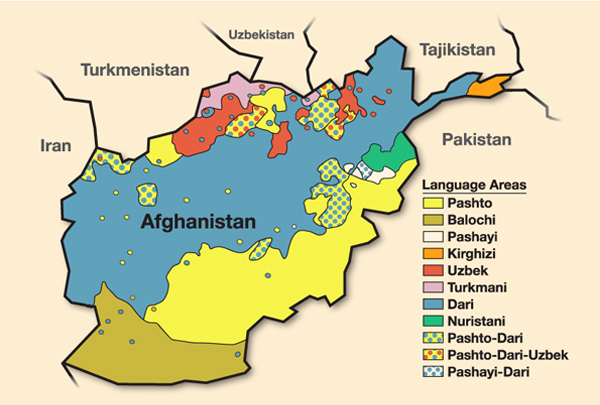
Third, proxy wars against each other by the neighbor and near neighbor countries such as India, Iran, and Pakistan also add to the devastation and destruction of Afghanistan. This phenomenon is a massive obstruction for the peace settlement in the country.
India sees Afghanistan in the prism of Pakistan. Some international and the domestic geopolitical experts maintain that India supports the National Directorate of Security (NDS) and the TTP to destabilize Pakistan. Pakistan blames that almost all insurgency particularly in Baluchistan is sponsored by the Indian intelligent agency RAW. Likewise, India alleged Pakistan aides Taliban and other militants groups to wreck havoc in India.
Afghanistan openly charged that Pakistan supports the Afghanistan Taliban. From the allegations and charges of the neighboring countries of Afghanistan, it is crystal clear that the neighboring countries are involved in destabilization of the region. The neighbor and the neighbor countries are a big hurdle for the peace of Afghanistan.
They use the territory and its manpower for their vested interests. Pakistan has been struggling for Islamabad friendly government in Kabul. This trend is deemed venomous by New Delhi. Similarly, India has been tying its level best to bring a puppet government such as Hamid Karzais government in Afghanistan which supports India. Hence Afghanistan becomes football in the hands of its neighboring countries.
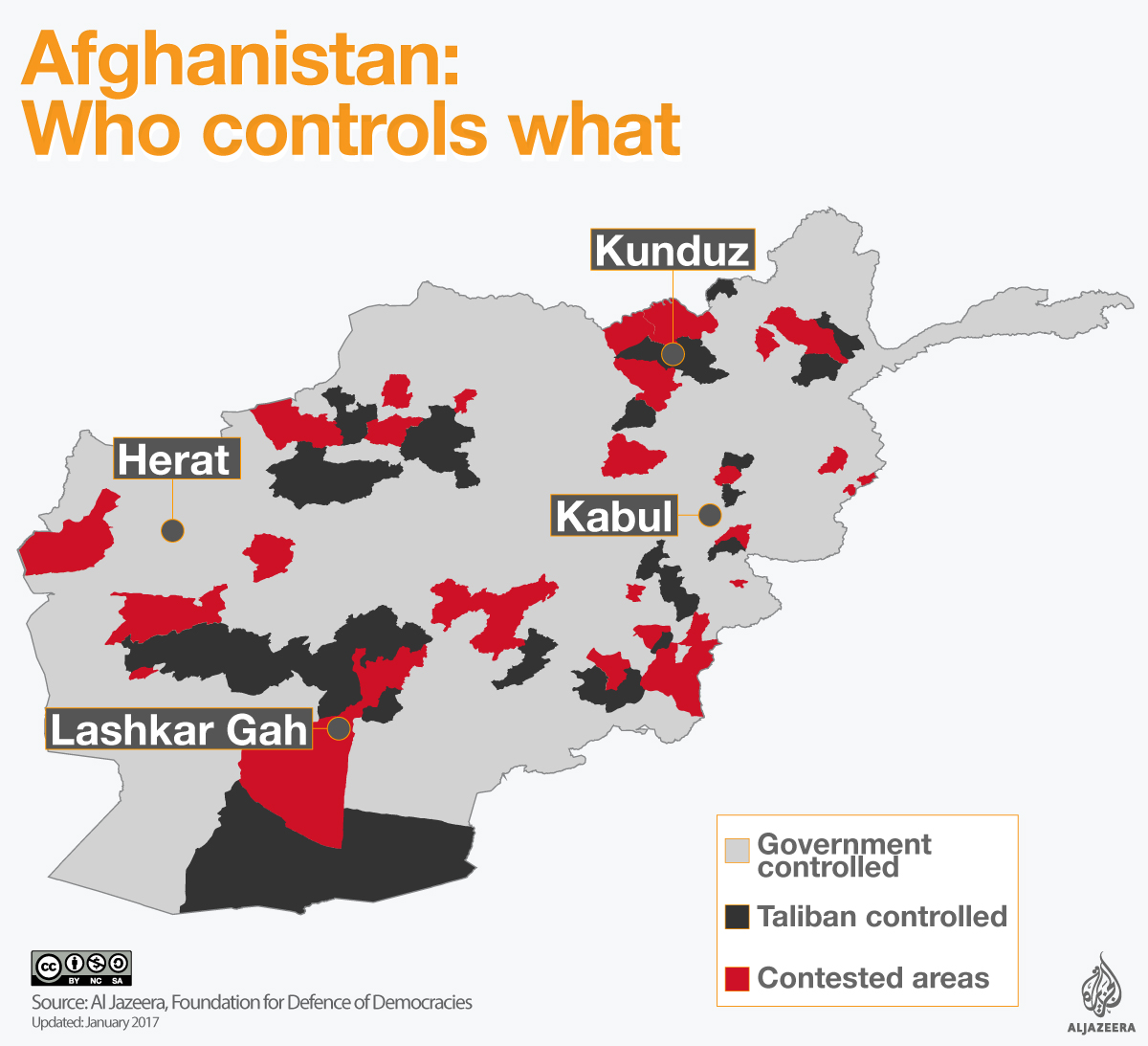
Forth, ethnic diversity and conflict in Afghanistan is a gigantic obstacle for the peace process of Afghanistan. The country has a diverse ethnic groups namely Pashton, Tajik, Uzbek, Hazara, so on. They are dragger drawn with each other, and abhor each other. This fact clears from the illustration of the formation of unity government of Afghanistan. All the ethnic groups do not like to work with each other. All ethnic groups think one is superior and mighty to other groups. Dependency even for common good is detested by the ethnic groups.
Fifth, Taliban abominates democracy. They opine democracy is western form of government and against the teaching of Islam (totally misinterpreted belief about Islamic tenets). Whenever Sharia is not enforced in Afghanistan they would continue their so-called Jihad (struggle) for imposing of it (sharia), the Taliban argues.
By Sattar Kingrani

